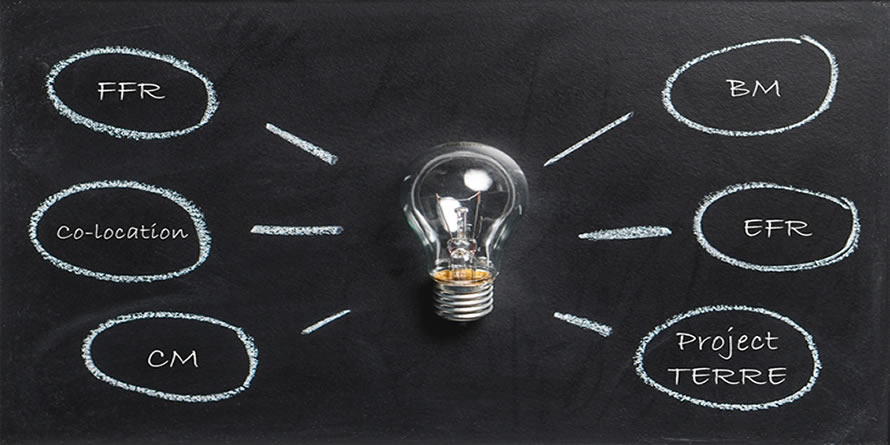Posted on: 26/07/2019
Two years ago, battery storage enjoyed a quite different environment. National Grid was offering attractively priced, bilateral Firm Frequency Response (FFR) contracts, so anyone on the enduring market could easily capture prices between £15/MWh and £25/MWh (and sometimes even higher). The Enhanced Frequency Response (EFR) tender also awarded 4-year contracts with an average price of £9.44/MWh to 201MW of storage projects. Back then, we were shocked by how low the price was, but over time, the price has only continued to fall.
Similarly, the lowest T-1 Capacity Market (CM) clearing price was £6.95/kW – which was again met with disbelief – whilst the T-4 prices stayed strong at around the £20/kW mark and battery de-rating was nothing but a rumour.
In short, high prices, long-term contracts and limited supply made a strong case to support any battery storage project in 2017.
With a current pipeline of almost 5GW of storage projects in various stages of development in the UK, the interest in this technology is very much alive and well. Battery pack costs continue to decline and the relentless march towards a carbon-free, renewables dominated system only reiterates the important role that flexibility (i.e. batteries) will play in the near future.
Although the fundamentals supporting the case of large-scale utility storage have remained largely consistent throughout the last few years, a lot has changed since 2017.
The FFR market became saturated and prices halved. To make things worse, National Grid is now procuring the product for much shorter delivery periods. They also recently announced the first static FFR weekly auction - a strong indication of their intention to procure closer to real time.
The de-rating factors introduced for 2018 again halved the CM revenues for most batteries. That, compounded with the more recent auction results, meant that storage can no longer count on any meaningful support from the CM for its investment case.
The lack of sufficient and stable long-term revenue security offered by CM and FFR has only widened the gap between the captured revenue and the security required by financiers. While the banking and investment functions are a lot more versed in the technical and commercial aspects of energy storage, the revenues in the Balancing Mechanism and wholesale markets are still seen as anecdotal. Therefore, they are not considered as a replacement to the values captured in the CM and FFR when making any investment decisions. It’s clear that National Grid is set upon using more liquid, market-based procurement methods, so the project backers will have to get comfortable with the complexities (and risks) of this new climate.
Despite all that, there is an underlying optimism for storage that these are just temporary complications which will gradually be resolved as more renewables come in, old players are phased out and price signals sharpen further. Perhaps this confidence is what’s keeping almost 5GW of battery projects still on the table.
What we’re seeing here is not the struggle of a new technology, but rather it’s an evolving business model within a fast-changing environment.
To that end, the value of storage has not diminished, if anything it has increased. It has, however, became harder to capture.
In 2017, we said:
The future of flexibility lies within the power markets and exchanges. The volatility of the Balancing Mechanism (BM) and the wholesale market is expected to persist, supported by declining capacity margin on the system, making it ideal for the quick response capability of battery storage.
Access to all the available markets will be crucial for projects to unlock optimal value from energy arbitrage. The most successful projects will be those that can respond to opportunities in whichever market presents the best price signals at any given time.
…and we stand by those words now.
Moreover, it’s becoming quickly apparent that having access to multiple revenue streams alone cannot close the revenue gap of the business models. Increasingly, value will often materialise close to real time, before vanishing quickly. Batteries are naturally well-placed to cash in on such occasions, but this approach requires sophisticated optimisation solutions, capable of both dynamically monitoring the market conditions, and acting quickly to capture these opportunities. Achieving that requires a skilled trading and optimisation team to constantly adapt these complex optimisation strategies, which is essential in capturing the most value.
Whilst being more complex to implement, and perceived as riskier in the short term, such merchant-focused business models are more sustainable and far less exposed to regulatory changes. We argue that energy arbitrage and actions on the Balancing Mechanism will be the main theatre for battery optimisation, but it’s important to note that there is a whole host of additional revenues opportunities which will be required for their success, for example frequency response, Capacity Market, reserve balancing services, local network management, co-location benefits etc.
After all, as we’ve said, the value is out there… we just have to look for it in more places, think outside of the box, take advantage of technology and work harder to capture it. Without skilled people supported by advanced technology, battery projects are likely to struggle in this new, more dynamic and smarter system. But, by taking this approach, not only can storage survive this new world, it will thrive when managed correctly.
This blog first appeared on Current-News on 23/07/2019
About the author
Bozhidar is responsible for analysing market opportunities to help asset owners maximise revenues. His role includes the continued development of processes and systems to enable customers to always optimise their positions and he also liaises with National Grid and DNOs to ensure access to all relevant opportunities. Bozhidar joined SmartestEnergy from KiWi Power where he was Head of UK Operations. He holds a Bachelor of Business Administration from Northeastern University, USA and a Master of Science in Economics and Policy of Energy and the Environment from University College London.

 United States
United States Australia
Australia







